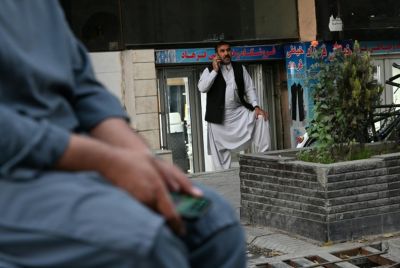India's Rape Shame: How Sex, Class and Property Keep Women at Risk
Sentencing Delhi bus rapists to death will do little to curb India's deep-rooted sexual abuse problem

The death sentences conferred upon four of the six men who raped and murdered a female student in Delhi last year may have brought some form of closure for the victim's family. However, the case has served only to highlight the scale of the problem facing India's anti-rape campaigners, a problem rooted in the muddled, often hypocritical, morality of this most complex of countries.
Since news of the Delhi rape broke last December, sparking nationwide protests, dozens of other atrocities have been brought to light by a press which has finally awoken to the severity of India's sexual violence problem. Yet, for every rapist whose crimes are publicly exposed, hundreds of others go unreported. The recent National Crime Bureau findings published in Crime in India 2012 show that, on average, a woman is raped in India every 22 minutes.
The number of attacks continues to rise at a frightening rate. In 2011, the NCB received 24,206 reports of rape; in 2012 this figure rose to 24,923 - an increase of over 1,000% on the figure reported in 1971, when the Bureau first began to record cases of rape. While the increase may be partly attributable to growing awareness, and better reporting, there is nonetheless a nexus of deep-rooted issues that make India's rape problem such a disturbing issue.
Indian society remains riven by rigid class divisions, and many believe the country's press, and its public, would not have reacted with such fury to the Delhi gang rape had the victim been of a lower social caste. While the violation of a middle-class medical student triggered national uproar, human rights groups lament the fact that the routine rape of tribal and Dalit women, regarded as languishing at the bottom of India's societal hierarchy, attract hardly any public attention.
In fact the media has highlighted 19 incidents of rape against Dalit women in a single month in the north Indian state of Haryana, yet this story has failed to gain traction in the public sphere. Yet it is perhaps fortunate that these cases have been brought to light at all. Fearing the reprisal of their middle and upper caste perpetrators or the hostile reaction of the police authorities to their cause, Dalit women often fail to report the most violent of crimes against them.
But, no matter their caste, women across the societal hierarchy are rarely treated as equals. Despite the country's constitutional mandate which guarantees the equality of women, and special mechanisms put in place to actually realise gender parity, India remains a deeply chauvinist society and the concept of fair treatment for both sexes remains a chimera.
As in many other countries, women are understood to be in need of protection, as a form of property. They are owned first by their father, then their husband or son. Such objectification means that women are denied access to their own property, notably land and credit, two crucial routes to social legitimacy. This reality is demonstrated by the fact that the middle and upper classes continue to prefer a son to a daughter, and also in the statistics published by the National Crime Bureau, which show the vast majority of sexual assaults against women are committed by their relatives, neighbours or other known people.
One might assume that India's economic growth would attenuate this problem. Yet, in reality, it has created fresh incentive for rape in many quarters. As India's economy has burgeoned, so the gap between rich and poor has become ever more conspicuous. The vast majority of the population fall below the poverty line and, for them, economic growth has reinforced their patterns of insecurity and sense of powerlessness. Rape is the ultimate form of control of a woman by a man, and some argue that it represents an increasingly prolific strategy for overcoming the impotence felt by huge numbers of India's male poor.
India's criminal justice system is embedded within this social context; in fact less than 10% of the country's higher court judges are female. Thus it is unsurprising that the police and courts are consistently hostile to women, and routinely fail to deliver justice. An atmosphere of suspected 'false complaints' surrounds the reporting and processing of rape cases, so the system manages conviction in less than 2% of the recorded cases. Legal commentators argue that the introduction of more stringent punishments for rape - chemical castration and death penalty - will make judges even more likely to give the benefit of the doubt to the suspect.
A young male student who campaigned for female security and equality on the streets of New Delhi last December told me how the police had taunted him for participating in the protests, accusing him of "not being a man". This exchange is the result of the social and political illegitimacy of India's women, and the ongoing fears over masculinity and power that exist within Indian society. The family of the Delhi bus victim may have received some smidgen of justice, but a lasting solution to India's problem remains as elusive as ever.
Dr Philippa Williams lectures on contemporary India at Queen Mary, University of London and is secretary of the British Association for South Asian Studies (Basas) which exists to support and network individuals and institutions generating original, independent research into the countries of South Asia
Basas is running a fundraising campaign to ensure its members continue to receive the financial support they need
© Copyright IBTimes 2025. All rights reserved.





















